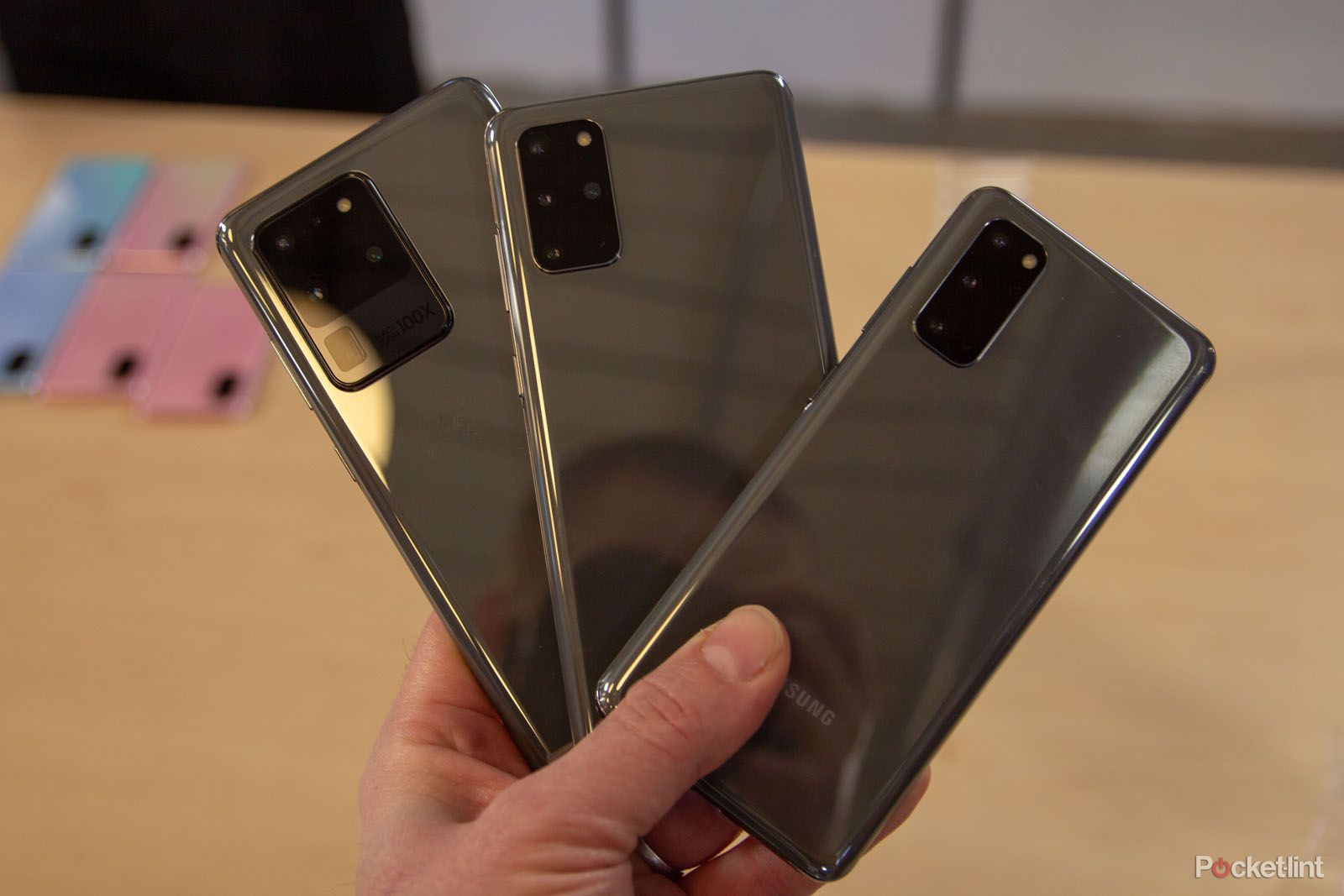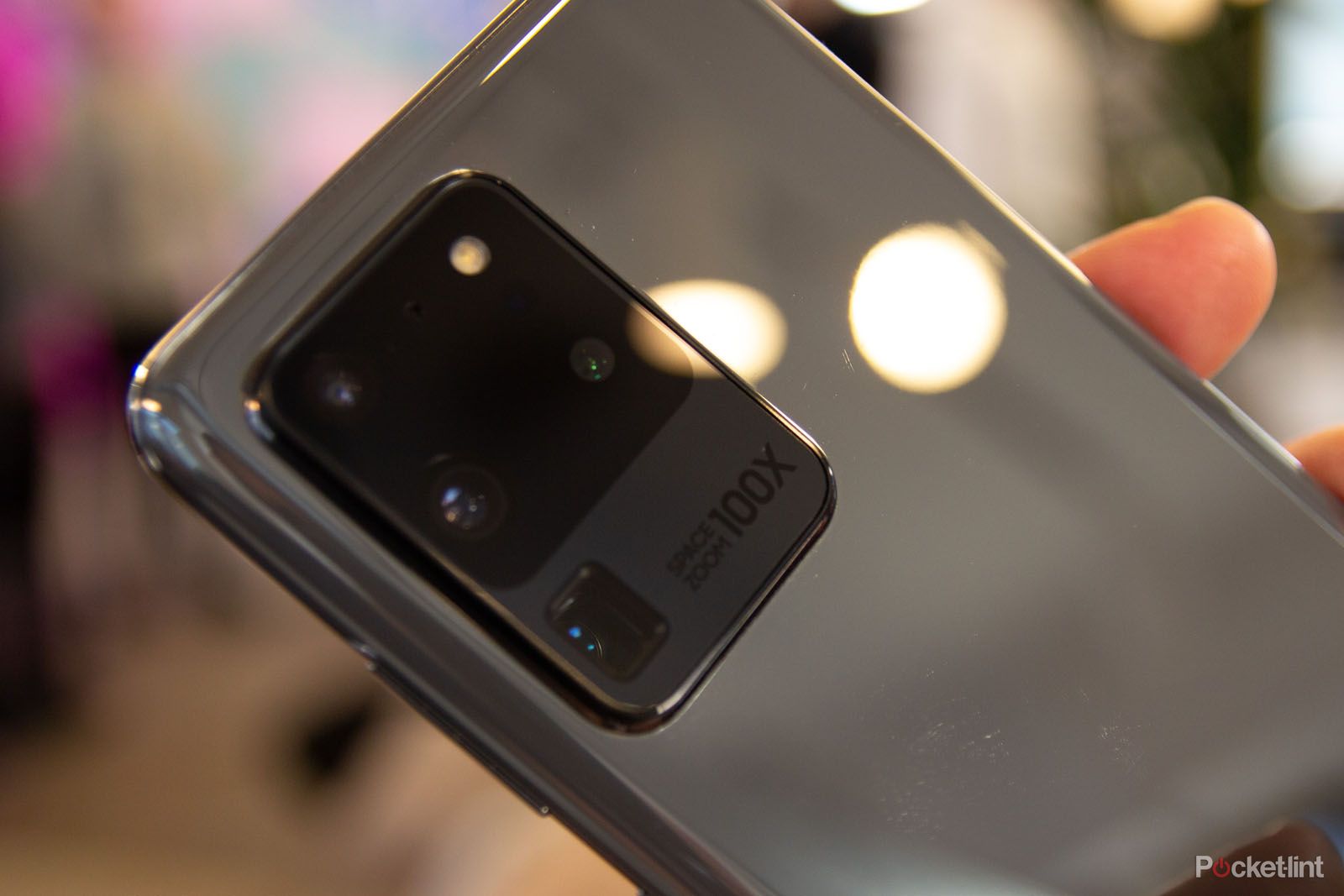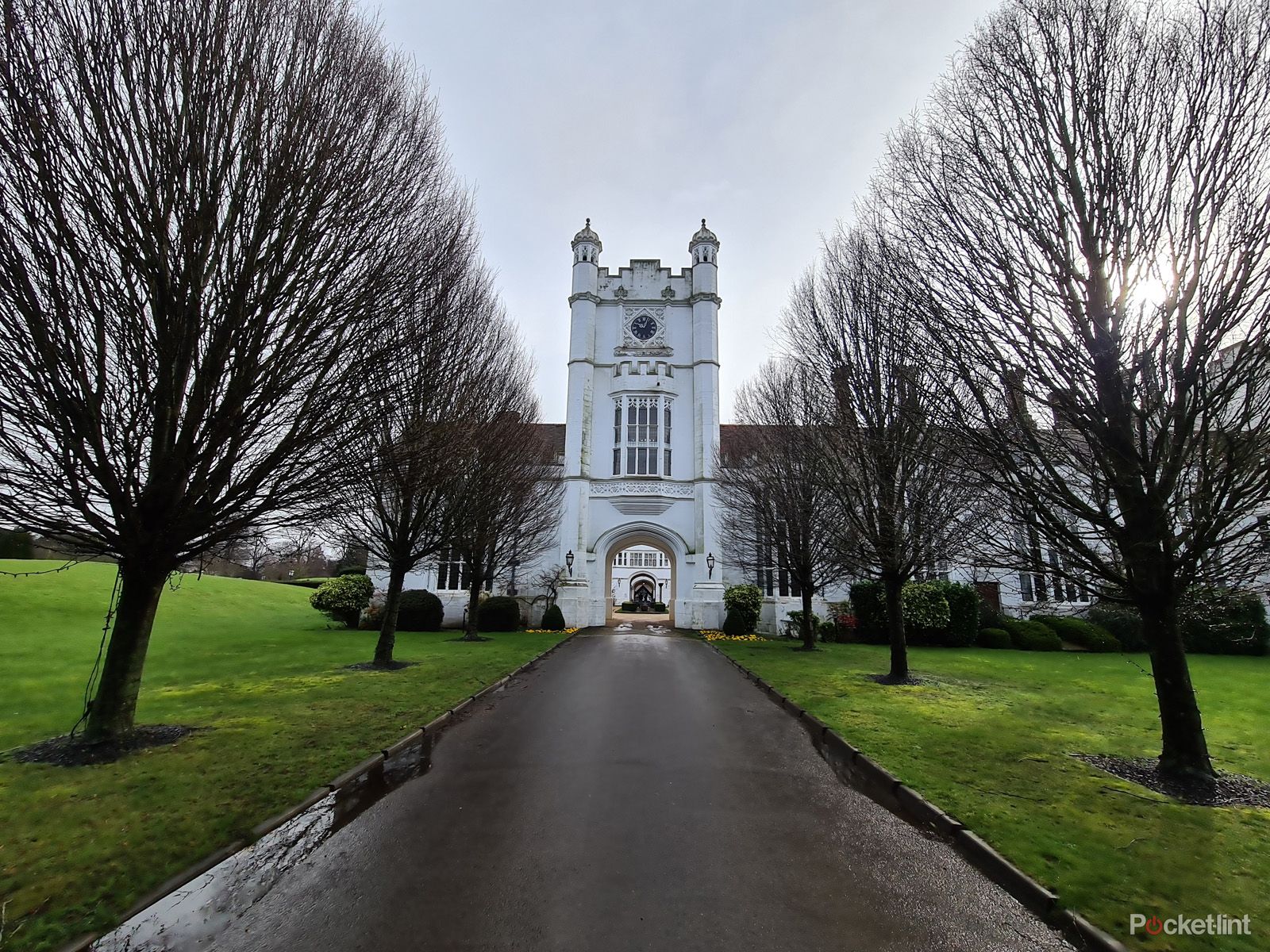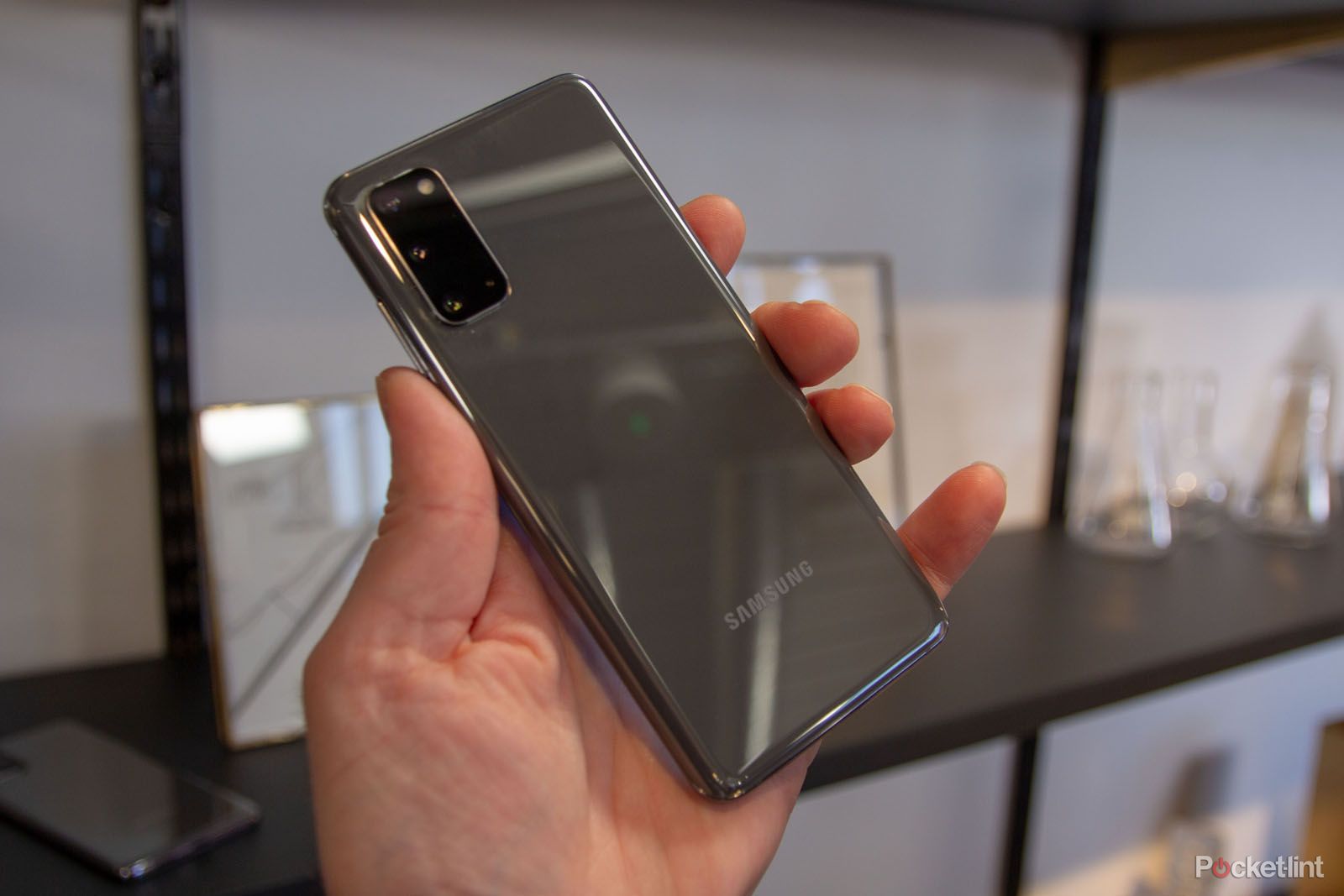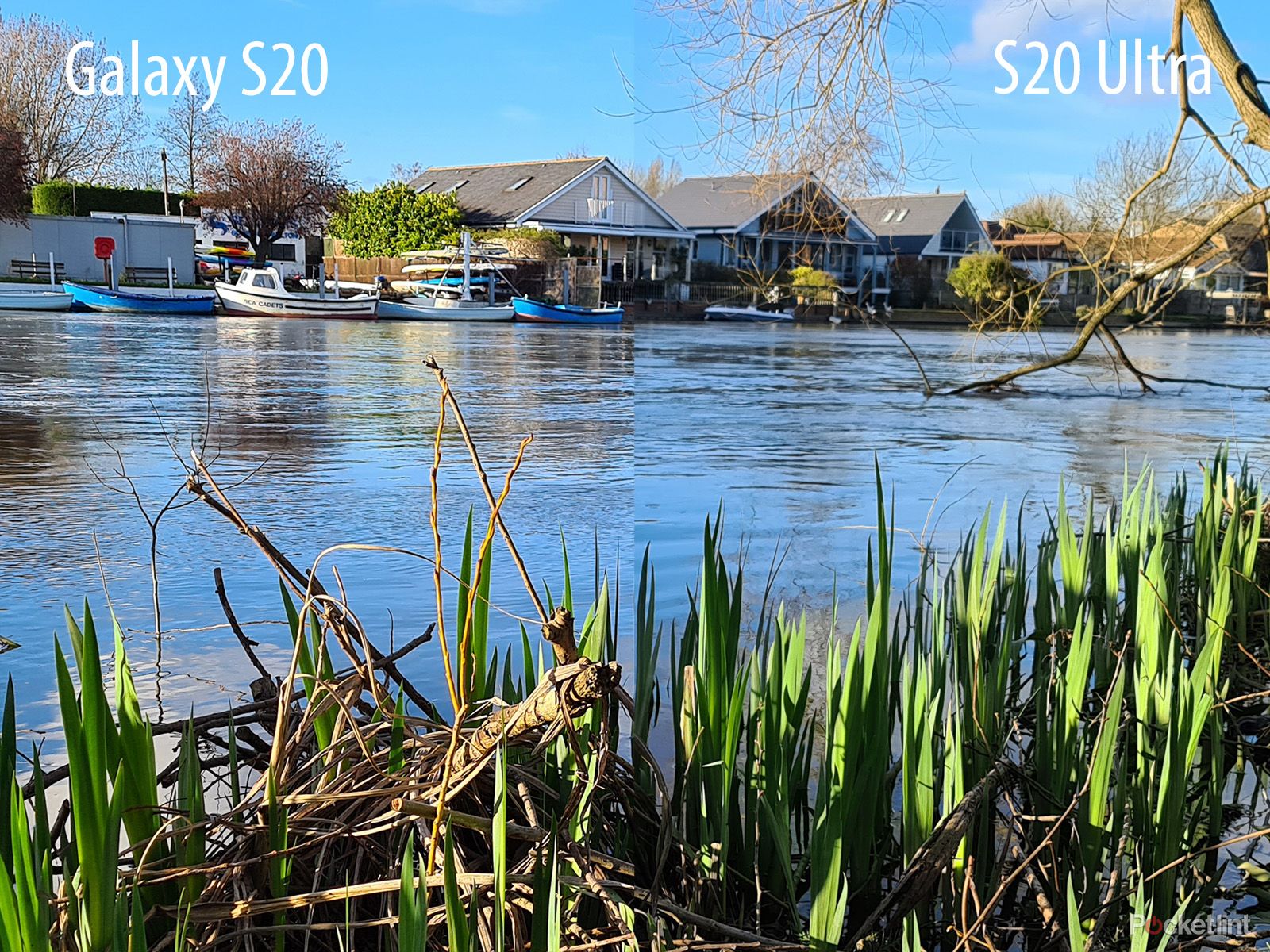Samsung is going big on cameras, bigger than ever before in the Galaxy S20 series. While the Galaxy S20 Ultra looks to dazzle with specs, it's not just as simple as throwing big numbers at a phone and expecting the best results.
The philosophy behind the Galaxy S20 or S20+ and the S20 Ultra are completely different. Here we're explaining what you get, how they perform and what the real differences are.
Samsung Galaxy S20+ 128GB (5G)
Triple and quad camera systems
Although all the new Galaxy S20 devices have that raised black camera bump in the corner, there's a big difference between the S20 and S20+ and the S20 Ultra. The S20 Ultra is a lot more aggressive in its approach, hitting some of the biggest specs we've seen in a smartphone camera.
That sets the S20 Ultra on a very different path. So let's break down what each of these phones contains and how that impacts on performance.
Samsung Galaxy S20 Ultra cameras in depth
- Main: 108MP, 0.8µm, f/1.8 OIS
- Ultra wide: 12MP, 1.4µm, f/2.2
- Telephoto: 48MP, 0.8µm, f/3.5 OIS
- DepthVision lens
- Front: 40MP, 0.7µm, f/2.2
Galaxy S20 Ultra main camera
In the past Samsung has stuck to using 12 or 16-megapixel cameras. For the past couple of years, the main camera offered a Dual Aperture lens, able to switch from f/1.5 to f/2.4 depending on the conditions. This system has now been totally scrapped, with a new 108-megapixel sensor instead, with an f/1.8 aperture.
It's a different philosophy, with Samsung chasing resolution in the way that Huawei and Xiaomi have previously done and looking to use pixel combining to get the results that you want. Natively the pixels on this sensor are 0.8µm, but Samsung uses pixel combining to result in a 12-megapixel photo, with an equivalent 2.4µm pixels instead - that's the theory, anyway.
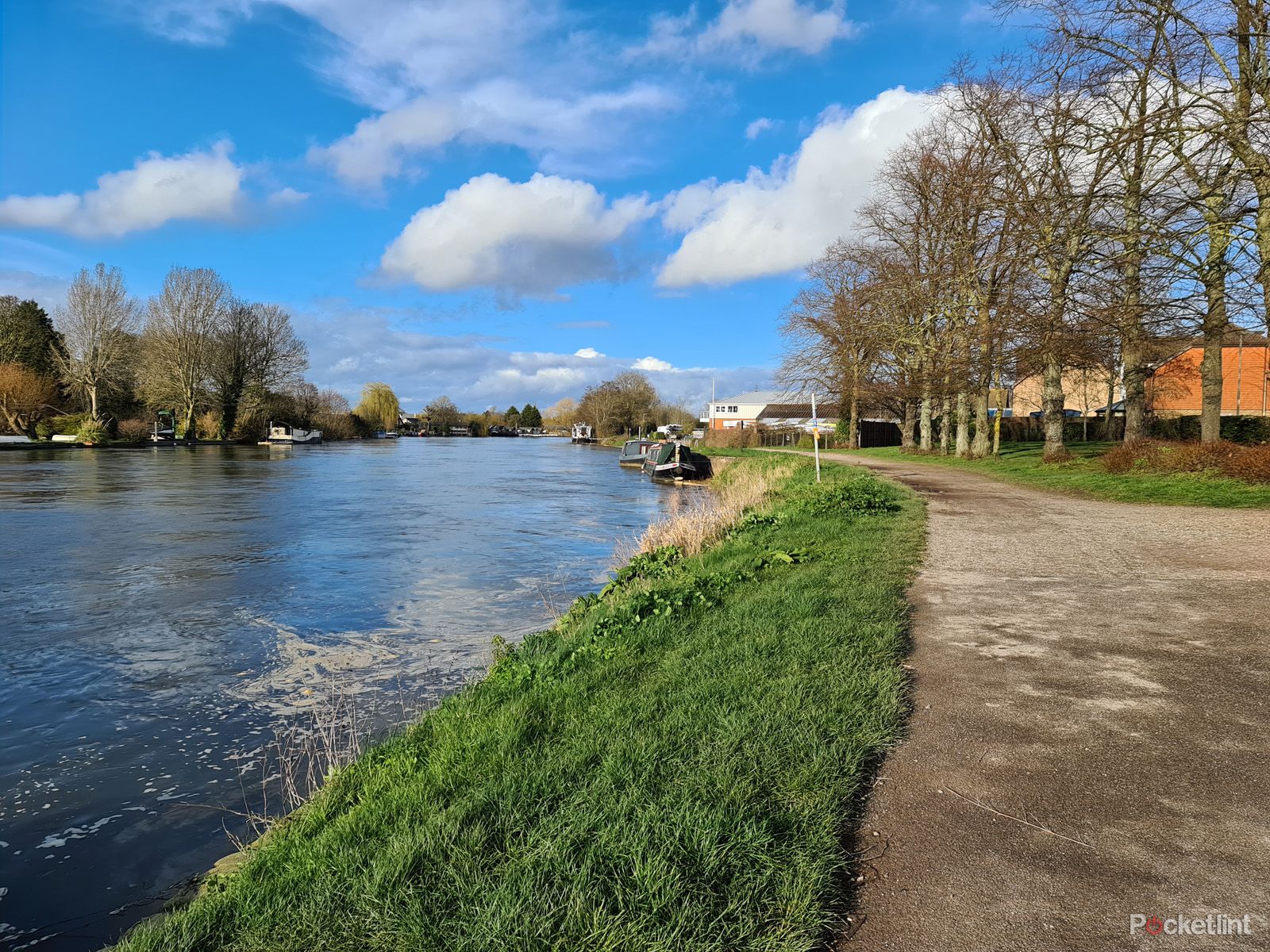
You can force the Samsung Galaxy S20 Ultra to take 108-megapixel photos, but you have to manually select that option - we suspect most people will stick to the default 12-megapixel output.
There is a lot more detail in the 108-megapixel images, but you lose some camera options if you choose to use it. In reality, the 108-megapixel option is only really useful if you need more detail - if you're going to be looking at your images close up. You can zoom in, yes, but you'll get better overall zoomed results from the telephoto lens if the aim is to get closer to the subject.
There's also a slight colour difference between the 108MP and 12MP modes - the 108MP is slightly warmer. Both cameras suffer from the narrow aperture, meaning that when you get close to a subject, not very much is in focus. That's called a shallow depth of field and it doesn't impact on landscape photos, but does mean that close-up images aren't always so good.
Galaxy S20 Ultra telephoto camera
This is Samsung's biggest telephoto camera on a phone, seeing it switch to using a periscope system. That aligns the lenses at 90 degrees and directs the light through a prism, meaning the camera can be physically larger because it's not constrained by the thickness of the phone. We've seen these lenses in the Huawei P30 Pro or Oppo Reno 10X Zoom previously.
Here, Samsung has stacked a 48-megapixel sensor behind it, again using pixel combining, taking the native 0.8µm to a 12-megapixel 1.6µm image instead. There's also optical image stabilisation, with the prism able to move to counter some of the handshake.
The headline feature is the 100X zoom, but there are zoom increments all the way through the range out to 100X. In reality, having tested the 100X zoom system, it's difficult to handhold because the slightest movement equates to a massive swing at the end of that focal field, so it needs support. The results aren't the great either.
Up to 30X is passable, but the best results are at 10X - here you get closer to the subject but retain quality you won't get in the other Galaxy S20 devices. Samsung says that the S20 Ultra offers 10X Hybrid Optic zoom - but it's actually 4X optical - with the range out to 10X using pixel combining and AI to clean up the image.
Samsung Galaxy S20 Ultra ultra-wide camera
The ultra-wide camera on the S20 Ultra is the only camera it shares with the S20 and S20+, a 12-megapixel camera. There's no pixel combining here, it's just a straight shooting ultra-wide camera. You can either tap to it in the viewfinder or you can pinch, with it also being referred to as 0.5x zoom - in the same way that Apple did on the iPhone 11 Pro.
The ultra-wide camera benefits from Samsung's "scene optimiser" and that can give some great results with rich blue skies and that distortion that's characteristic of ultra-wide angle lenses. It's great for landscapes, but as we said, it's essentially the same across all the phones.
Samsung Galaxy S20 Ultra selfie camera
The front camera on the S20 Ultra is again using the pixel combining technique, to take the 40-megapixel 0.7µm sensor over to 10-megapixel 1.4µm. That's what Samsung's spec sheet says, but we ended up with 6.5-megapixel images instead.
Again, it's a big resolution play and in this case, the difference in the results from the Ultra compared to the other S20 devices is that it equates to 1.4µm while the others are 1.22µm.
Does it make any difference in reality? If you want a really big selfie then 40MP is there for you, but it's not hugely different to the S20+ from what we've seen.
Samsung Galaxy S20 and S20+ cameras in depth
- Main: 12MP, 1.8µm, f/1.8 OIS
- Ultra wide: 12MP, 1.4µm, f/2.2
- Telephoto: 64MP, 0.8µm, f/2.0 OIS
- DepthVision lens (S20+ only)
- Front: 10MP, 1.22µm, f/2.2
Samsung Galaxy S20 and S20+ main camera
The main camera on the Galaxy S20 and the Galaxy S20+ is the same, a 12-megapixel sensor with 1.8µm pixels. This is pretty exciting in itself, although may slip into the shadow of the Galaxy S20 Ultra with all its big numbers.
This camera is important because the native pixel sites are larger than most - the iPhone 11 Pro, for example, has 1.4µm pixels, as does the Pixel 4. Indeed, so did the Samsung Galaxy S10. In theory, the Galaxy S20 and S20+ should let in more light, boosting the capture capabilities and the images do appear richer and sharper than those from the Galaxy S20 Ultra.
What does that mean in practise? It means that out of the box you might get better images from the S20 and S20+ in normal conditions. We've found that in many cases, the Galaxy S20+ gives a better result than the S20 Ultra when in 12MP mode - but you have to look hard to spot it.
In low light it's hard to judge the performance when you use Night Mode (which gives the best results) because there's so much AI and processing. In our tests there doesn't appear to be a huge difference between the S20 Ultra and the S20+ in these conditions.
A word on the DepthVision sensor
There's a blank space in the camera bump on the Galaxy S20 and that's because it doesn't have the DepthVision sensor. That's the fourth part of the quad arrangement and something that the S20+ and the S20 Ultra both have.
These sorts of additional sensors have been popular for some time, used by manufacturers to boost the information on depth. That's supposed to aid the portrait modes and bokeh effects, although we've never really been convinced by them. Many budget phones throw in a second depth sensor that appears to do almost nothing - and we've seen some of the best portrait shots come not from these sensors, but from better AI. The Pixel 4 is a good example of this.
We've tried covering the DepthVision sensor and found everything to still work - although it will give you a warning to keep the subject within a particular range.
Samsung Galaxy S20 and S20+ telephoto camera
Moving on to the telephoto lens and Samsung is back to the big numbers, with a 64-megapixel sensor. Again, this has tiny pixels at 0.8µm, but the resultant image you get is 12.2 megapixels.
The Galaxy S20 is actually a 3X optical lens, using AI and digital zoom to take you out to 30X - if you want to go that far. Like the S20 Ultra, it's not great at the far end, but out to 10X it is passable. It's not as sharp as the S20 Ultra at this range (see the samples above at 10X zoom), so if bigger zoom is something you want, then the S20 Ultra might be the better device for you.
Like the S20 Ultra, you can pinch to access this zoom or you can tap through different zoom lengths up to the 30X. Again, you need to have a very steady hand to reduce movement at the far end, despite the optical image stabilisation.
Samsung Galaxy S20 and S20+ ultra-wide camera
The ultra-wide camera in the Galaxy S20 models is the same - so there's nothing to add here above what we said about the S20 Ultra.
Samsung Galaxy S20 and S20+ selfie camera
The front camera on the S20 and S20+ is a lot more conventional than the Ultra, with a 10-megapixel sensor with f/2.2 aperture and 1.22µm pixels.
It's a decent performer and as we said above, we can't detect any huge differences to the S20 Ultra.
Conclusions
Samsung made a big play for specs with the Galaxy S20 Ultra, packing in the pixels and making a lot of promises. That presents some unique opportunities you won't get elsewhere from the S20 devices - the 108-megapixel photos can give you loads of detail and the zoom performance is better overall - but we can't help feeling there's a heavy dose of novelty here and in many ways, the specs are designed to impress, while the cameras aren't hugely different.
The Galaxy S20 and S20+ are great performers and the main camera on these phones feels better placed for everyday use. It might not sound as fancy, but it performs just as well in low light and in some cases better in normal conditions. Of course, there's a big caveat with that - personal preference.
How an image looks and the quality it carries is open to interpretation. With so many good smartphone cameras out there, it might be the detail from the 108-megapixel images or the better distance zoom that impresses you the most, because it's rather more unique. The downside, of course, is the price - the S20 Ultra is expensive however you approach it, and the Galaxy S20 in 4G offers much the same camera experience with a much more approachable price.

